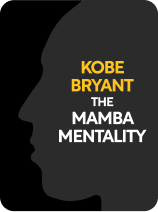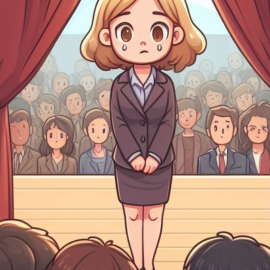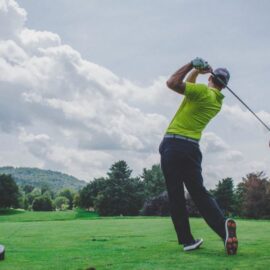

This article is an excerpt from the Shortform book guide to "The Mamba Mentality" by Kobe Bryant. Shortform has the world's best summaries and analyses of books you should be reading.
Like this article? Sign up for a free trial here .
What does it mean to never stop improving? How does this apply to sports and the Mamba Mentality?
Never stop improving is part of the Mamba Mentality. For Kobe Bryant, this means always looking for ways to beat your opponents, and continuing to learn about ways to improve.
Keep reading to find out how to never stop improving and The Mamba Mentality.
Never Stop Improving Your Skills and Your Mentality
In order to become great, it’s important to never stop improving. Start with honestly assess your strengths and weaknesses, and learn from your competitor’s strengths and weaknesses. Kobe’s film sessions were just as critical as his gym workouts. He watched tape of himself and also studied players across the league to learn their strengths and shortcomings, so that he knew exactly how to play against them. He was never intimidated by facing talented opponents—he merely adjusted his game accordingly. He explained his strategies for many of the NBA’s top players, past and present, and used film and lessons from game to never stop improving.
- Allen Iverson, who was such a skillful player that his primary weakness was his short stature. Kobe looked for ways to use his height advantage to shoot over Iverson. Kobe also learned that Iverson had a pattern of attack: He generally hung back during the first few minutes of a game, then he became more aggressive. Kobe tried to disrupt Iverson’s routine by letting him get the ball when he wasn’t expecting it, which lulled Iverson into a false confidence that made him more likely to create an opening that Kobe and his teammates could exploit.
- Dikembe Mutombo and Hakeem Olajuwon, who used their left hands to pull down opponents who were dunking the ball. The tactic was so subtle that the referees wouldn’t notice. Once Kobe realized this, he started putting his left arm up in order to create space between them and also to imply that he was willing to be as physical as Mutombo.
- Tim Duncan, who was a strategic defender and a major reason that the Spurs swept the Lakers in the 1999 playoffs. Kobe eventually realized that Duncan and his teammates never pushed in to make contact when an opposing player drove to the basket—instead, they backed off. Shooters generally expected contact from their opponents—and they welcomed the opportunity to draw a foul—so when the Spurs left that space open, it threw the shooter off-balance. Once Kobe caught onto this technique, he simply used that space as a runway for his shot.
- Cuttino “Cat” Mobley, who relied on his speed and agile hands. Kobe learned to push his body against Mobley, which irritated him. Kobe frustrated opponents as often as he could, in order to disrupt their focus.
- Tracy McGrady, who was such a well-rounded offensive player that he was the toughest matchup Kobe ever faced. Kobe found ways to frustrate McGrady by pushing into certain parts of his body (including his hips, legs, and back) that made McGrady uncomfortable. Kobe also knew that McGrady constantly tried to knock the ball out of opponents’ hands, so Kobe always kept the ball far from McGrady’s reach.
- Chris Paul, who was particularly skillful when moving to his right side. Accordingly, when Kobe guarded Paul, Kobe always used his left hand to block Paul from moving in that direction.
- LeBron James, who was not only taller but also bigger than Kobe. However, Kobe enjoyed physicality—hitting other players as well as being hit—more than James, so Kobe used his physical aggression to his advantage.
- Russell Westbrook, who wasn’t a strong shooter when he first got in the league but quickly improved. Although Westbrook was easy to block at first, once he became a skilled shooter, Kobe frustrated Westbrook with grabs and holds that were too subtle for the referees to notice. When the roles were reversed and Westbrook was on defense, Kobe knew that Westbrook’s competitiveness would make him try to block Kobe’s shots, so Kobe fooled him with pump fakes and either drew fouls or created openings to move around Westbrook.
- Shane Battier, who would block the view of the basket when guarding shooters. Kobe wasn’t fazed by this strategy, because he had practiced so much that he could rely on muscle memory and experience to shoot without seeing the basket.
Kobe Bryant’s strength to never give up came from his dedication to learning. Kobe also knew his teammates’ strengths, and he found ways to collaborate on the court. For example, when Shaq was on the Lakers, Kobe didn’t merely rely on Shaq’s size and skills—he found ways to help Shaq by misleading defenders. Kobe made opponents think that he was about to take a shot (he’d even bring his feet off the ground as if to shoot) so that the defender would put his arms up to block the shot. When the guard’s arms went up, it created an opening for Kobe to pass the ball to Shaq to score. This was part of his strategy to never stop improving.
Try New Things
Another part of the idea too never stop improving is to try new things. As you strive to achieve your goal, you may find opportunities and lessons on the periphery of your craft. After the first decade of Kobe’s career, he’d competed in the NBA Finals in four out of five consecutive years, and he’d won three championship rings. Furthermore, he had scored a career-high 81 points in one game, the second-most of any player in NBA history. Kobe’s achievements earned him praise and recognition within the league, as well as opportunities outside of it.
Combine Your Old and New Knowledge to Innovate
When Kobe had the opportunity to design shoes with Nike, he was characteristically meticulous. He wasn’t concerned with making a flashy design—his primary focus was to create a shoe that allowed him to perform at his best. Kobe’s feet had to carry him up and down the basketball court every day, and he needed them to be comfortable, agile, and supported. The staff at Nike matched his passion, and they worked tirelessly to innovate and improve on the shoe design for each subsequent version.
A few years into the deal, in 2008, Kobe told Nike that he wanted to make a low-top sneaker. Kobe had been inspired by watching soccer players torque their ankles even more than basketball players, and doing it in low-cut sneakers. Kobe realized that basketball players’ belief that high-top shoes supported and protected their ankles was wrong—in reality, high-tops were actually weakening their ankles and decreasing their mobility.
Nike was initially resistant, but Kobe pushed. He was convinced that it was time for a sea change in the sneaker world—he just needed to convince others. Kobe even had to pitch his low-top Kobe IV shoe to Foot Locker, so that the retail giant would know how to sell the sneaker.
Adapt Your Habits to New Circumstances
Kobe Bryant’s determination to never give up also showed when he went to the Olympics. In 2008, after Kobe had won three championships, he played in the Olympics alongside LeBron James, Dwayne Wade, Chris Paul, Carmelo Anthony, and other basketball greats. Although Kobe was the senior statesman on the team, playing with the best players in the NBA elevated his game. Because Kobe knew that other players excelled at stealing, scoring, and other elements of the game, Kobe was free to focus on his greatest strength: defense.
Playing in the Olympics also gave Kobe the chance to play under Duke University coach Mike Krzyzewski. Coach K had met and formed a close bond with Kobe years earlier, when he’d tried to recruit him to play at Duke. During the Olympics, Kobe reveled in the opportunity to finally play under Coach K.
The biggest challenge of playing in the Olympics was the uncertainty. In the NBA, Kobe knew the practice, game, and travel routine. He was familiar with the buses, the training rooms, and the arenas for every game, and he could easily maintain his training and preparation routine. However, while traveling through Spain, China, Turkey, and the UK, Kobe didn’t know what to expect, so he had to adapt. Still, Kobe trained and worked out as best he could, and he maintained his mental intensity. For Kobe Bryant, to never give up meant to always keep learning.
Never Stop Improving
The Mamba Mentality is about continuing to strive upward, regardless of the heights you’ve reached. No matter how many championship rings Kobe won, he always wanted more. He’d worked hard to become such a well-rounded and dominant player, and he never wanted to feel defeat. When Kobe did inevitably face losses, he carried on just as he would have after a win: He continued his workout, practice, and film-study regimen.
Kobe’s tried-and-true routine carried him through his entire career, down to the final game. The day of his last game felt like any other—until he walked into the arena, where the mood was somber. However, once the game started, Kobe played with the same passion, strategy, and intensity that had defined his 20-year career. By the time he retired, Kobe credited basketball with teaching him about leadership, human nature, and his own creativity. The discipline and tenacity he had practiced throughout his basketball career would carry on into his post-NBA endeavors.
Exercise: How Do You Overcome Obstacles?
Reflect on how you make it over inevitable bumps in the road.
- Describe one goal you recently accomplished or are currently working toward.
- Describe one hurdle you faced in that journey.
- How did you overcome it?
- In the future, how would you avoid that challenge, if possible? Or how would you approach it differently?

———End of Preview———
Like what you just read? Read the rest of the world's best book summary and analysis of Kobe Bryant's "The Mamba Mentality" at Shortform .
Here's what you'll find in our full The Mamba Mentality summary :
- How Kobe Bryant was able to play and dominate the best players
- Why Kobe took up tap dancing for a summer
- How reading the referee's handbook helped Kobe improve his game






